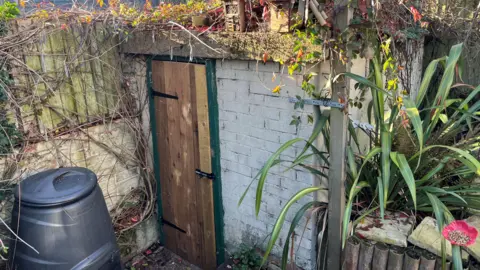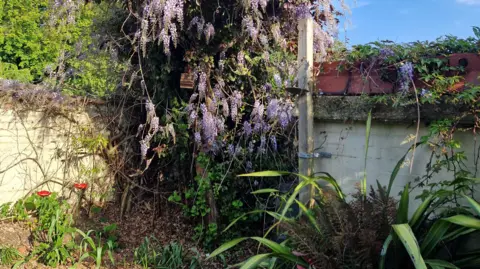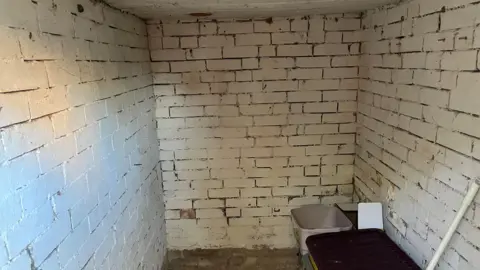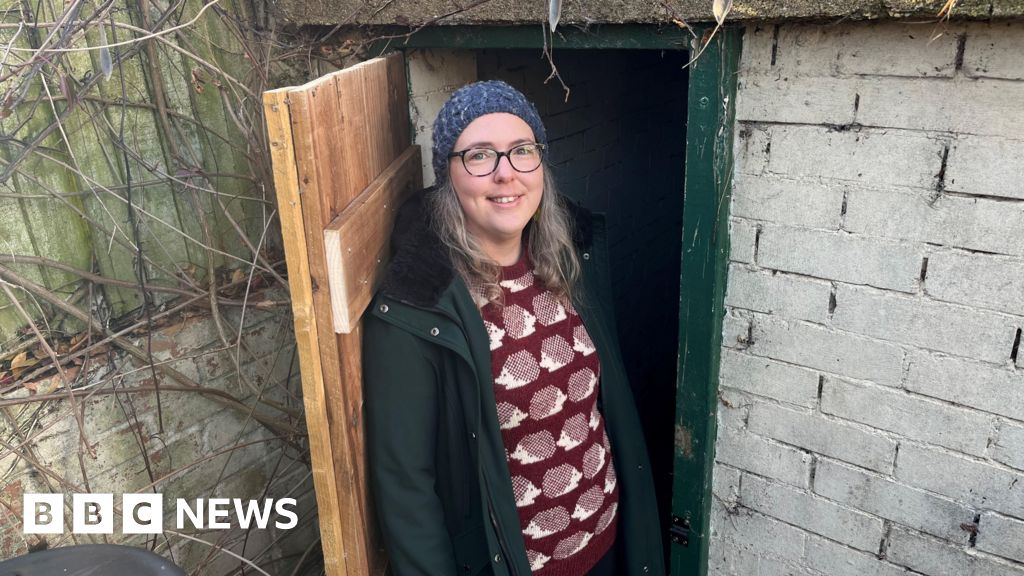 John Devine/BBC
John Devine/BBC
Mary Andrews said she thought her garden contained an old brick built outhouse, but that changed when she discovered the building’s concrete roof
An archaeologist said she was “delighted” to discover a World War Two air raid shelter in her back garden after removing some overgrowth.
Mary Andrews, 35, bought the end-of-terrace Victorian house in Chatteris, Cambridgeshire, in January and was told the building at the bottom of the back garden was an old brick shed.
The structure was covered with heavily overgrown shrubs and when the plants were removed a 22-cm (9-in) concrete roof was exposed.
After some research, Ms Andrews said she found the mystery outhouse was a WW2 domestic surface air raid shelter.
 John Devine/BBC
John Devine/BBC
The shelter was in a poor state when Ms Andrews uncovered it and her father, Colin Andrews, replaced the door that was rotten and hanging off the hinges
Ms Andrews said the land registry for her house showed a small square box at the bottom of her garden, but it was her dad, Colin Andrews, who first noticed the building’s roof.
“It was a quite overgrown when I moved in and my dad came round to help sort the garden.
“[He] thought it was a bit over the top to have such a thick slab of concrete on the roof on what we’d assumed was a brick shed,” she said.
 John Devine/BBC
John Devine/BBC
Colin Andrews said he thought as his daughter’s home was near the former railway station in Chatteris, the terrace house might have been for railway workers
When Ms Andrews used a spade to remove the overgrowth on outside of the building she hit a solid object, which turned out to be tiled bricks that led to the entrance to the shelter.
Ms Andrews added the shelter did not have anything inside it except “a few old logs for the fire”.
 Mary Andrews
Mary Andrews
The doorway to the shelter was completely covered with shrubbery when Ms Andrews moved into her home
Mr Andrews said the shelter was also sunken below ground level by about 30cm (1 ft) which only became apparent after some clearance.
“The property is part of a terrace of three homes and they are quite near where the old Chatteris railway station was, so they might have been railway men’s cottages and needed the shelter as the area could have been a target during World War Two,” he said.
Ms Andrews said she was delighted to uncover a relic from nearly 90 years ago.
She added that she would keep the shelter to store gardening tools and “bits and bobs”.
 John Devine/BBC
John Devine/BBC
Mr Andrews said she only discovered it was sunken into the ground by about 30cm (1ft) when she cleared the entrance



Comments are closed.